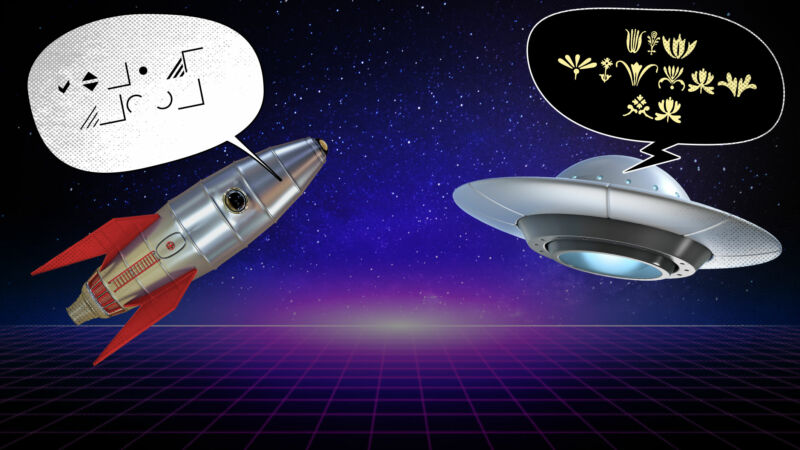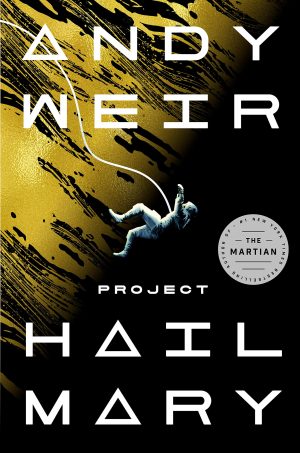Andy Weir’s Project Hail Mary and the soft, squishy science of language

Enlarge / Artist's impression of either understanding being achieved or intergalactic war being incited, I'm not sure which. (credit: Aurich Lawson | Getty Images)
Andy Weir's latest, Project Hail Mary, is a good book that you'll almost certainly enjoy if you enjoyed Weir's freshman novel The Martian. It's another tale of solving problems with science, as a lone human named Ryland Grace and a lone alien named Rocky must save our stellar neighborhood from a star-eating parasite called "Astrophage." PHM is a buddy movie in space in a way that The Martian didn't get to be, and the interaction between Grace and Rocky is the biggest reason to read the book. The pair makes a hell of a problem-solving team, jazz hands and fist bumps and all.
 Project Hail Mary (Ars Technica may earn compensation for sales from links on this post through affiliate programs.) But the relative ease with which Grace and Rocky understand each other got me thinking about the real-world issues that might arise when two beings from vastly different evolutionary backgrounds try to communicate. PHM's otherwise solid commitment to science leans a bit here on what we might call the "anthropic principle of science fiction," after the more well-known general anthropic principle. To wit: Rocky and Grace can communicate well with each other because it serves the story, and if they couldn't, the book would be shorter and less interesting.
Project Hail Mary (Ars Technica may earn compensation for sales from links on this post through affiliate programs.) But the relative ease with which Grace and Rocky understand each other got me thinking about the real-world issues that might arise when two beings from vastly different evolutionary backgrounds try to communicate. PHM's otherwise solid commitment to science leans a bit here on what we might call the "anthropic principle of science fiction," after the more well-known general anthropic principle. To wit: Rocky and Grace can communicate well with each other because it serves the story, and if they couldn't, the book would be shorter and less interesting.I get it-that's how storytelling works. I don't want to sound like a bitter basement-dwelling critic throwing shade at a bestselling science fiction author. But PHM is like The Martian in that it's about solving problems realistically. From my nerd basement throne, it feels like the softer sciences of linguistics and anthropology (or perhaps xenolinguistics and xenoanthropology) don't get the same stage time as their more STEM-y counterparts like physics and relativity.
Read 59 remaining paragraphs | Comments